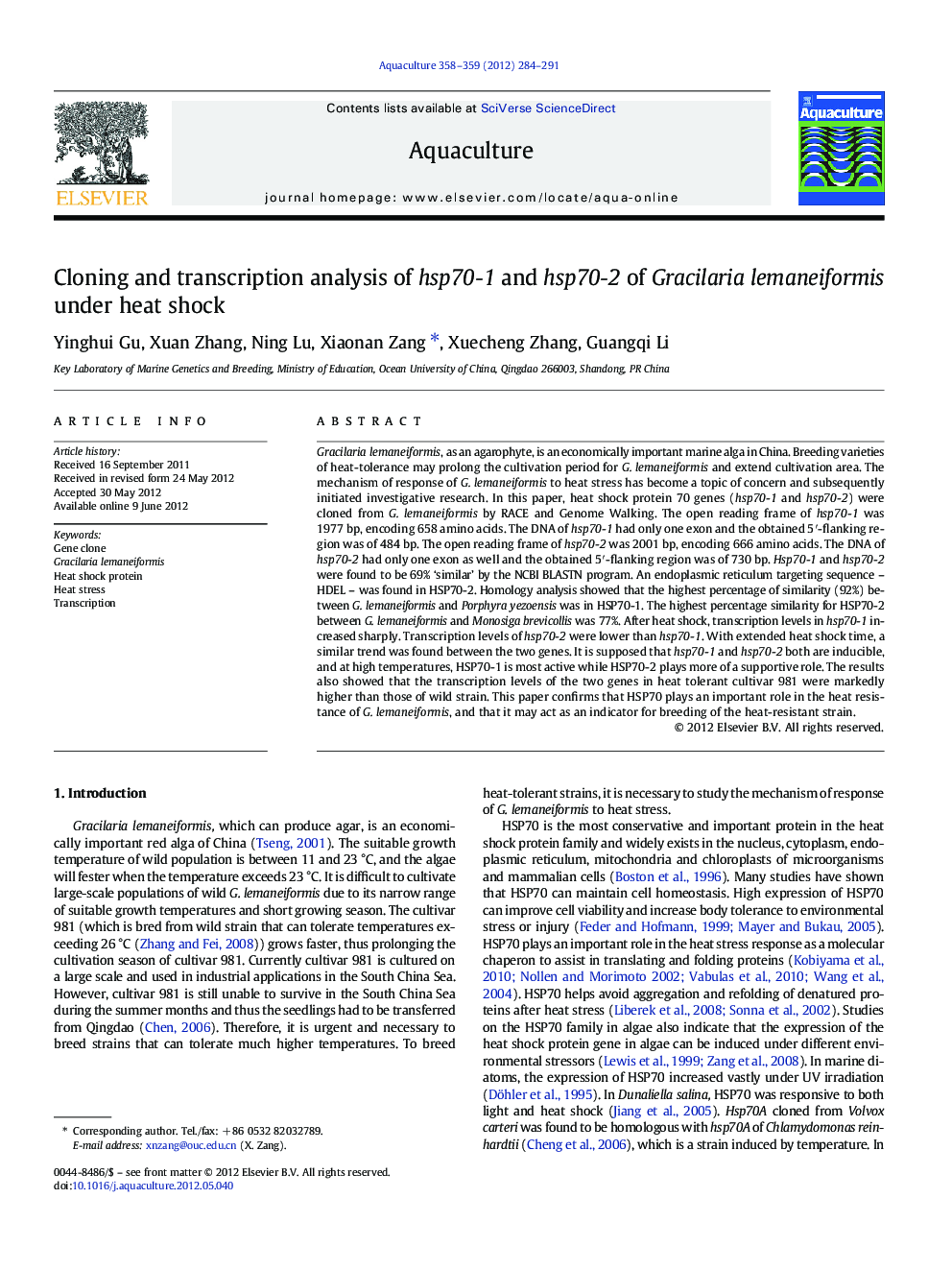| Article ID | Journal | Published Year | Pages | File Type |
|---|---|---|---|---|
| 2422511 | Aquaculture | 2012 | 8 Pages |
Gracilaria lemaneiformis, as an agarophyte, is an economically important marine alga in China. Breeding varieties of heat-tolerance may prolong the cultivation period for G. lemaneiformis and extend cultivation area. The mechanism of response of G. lemaneiformis to heat stress has become a topic of concern and subsequently initiated investigative research. In this paper, heat shock protein 70 genes (hsp70-1 and hsp70-2) were cloned from G. lemaneiformis by RACE and Genome Walking. The open reading frame of hsp70-1 was 1977 bp, encoding 658 amino acids. The DNA of hsp70-1 had only one exon and the obtained 5′-flanking region was of 484 bp. The open reading frame of hsp70-2 was 2001 bp, encoding 666 amino acids. The DNA of hsp70-2 had only one exon as well and the obtained 5′-flanking region was of 730 bp. Hsp70-1 and hsp70-2 were found to be 69% ‘similar’ by the NCBI BLASTN program. An endoplasmic reticulum targeting sequence – HDEL – was found in HSP70-2. Homology analysis showed that the highest percentage of similarity (92%) between G. lemaneiformis and Porphyra yezoensis was in HSP70-1. The highest percentage similarity for HSP70-2 between G. lemaneiformis and Monosiga brevicollis was 77%. After heat shock, transcription levels in hsp70-1 increased sharply. Transcription levels of hsp70-2 were lower than hsp70-1. With extended heat shock time, a similar trend was found between the two genes. It is supposed that hsp70-1 and hsp70-2 both are inducible, and at high temperatures, HSP70-1 is most active while HSP70-2 plays more of a supportive role. The results also showed that the transcription levels of the two genes in heat tolerant cultivar 981 were markedly higher than those of wild strain. This paper confirms that HSP70 plays an important role in the heat resistance of G. lemaneiformis, and that it may act as an indicator for breeding of the heat-resistant strain.
► We first researched the role of HSP70 in heat resistance of G. lemaneiformis. ► We first cloned and analyzed hsp70-1 and hsp70-2 genes from G. lemaneiformis. ► We found that activity of hsp70 was directly related to the heat-tolerant ability of G. lemaneiformis.
